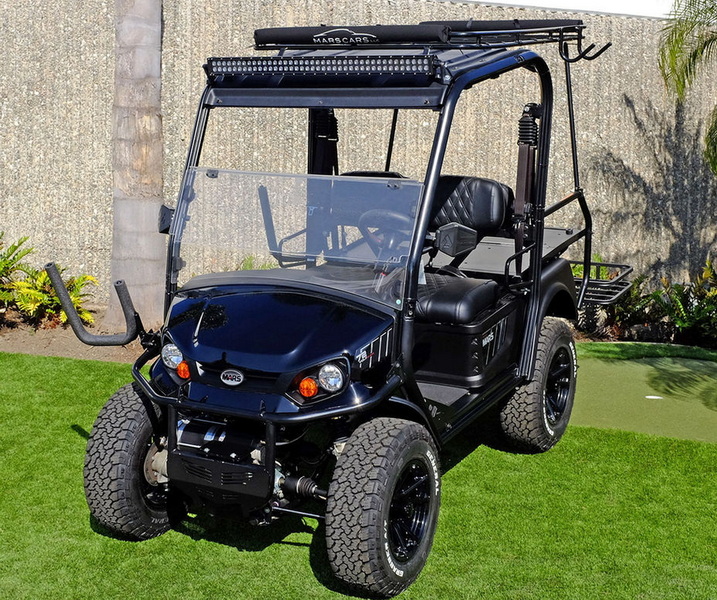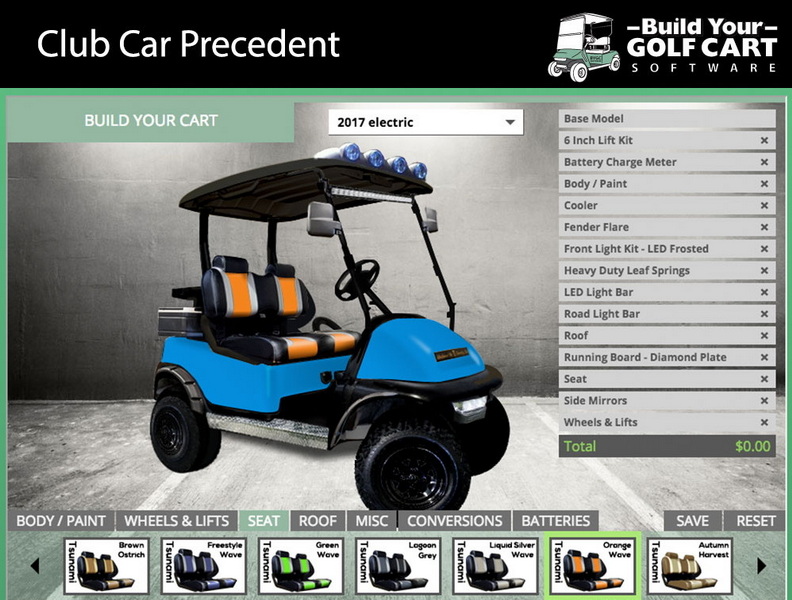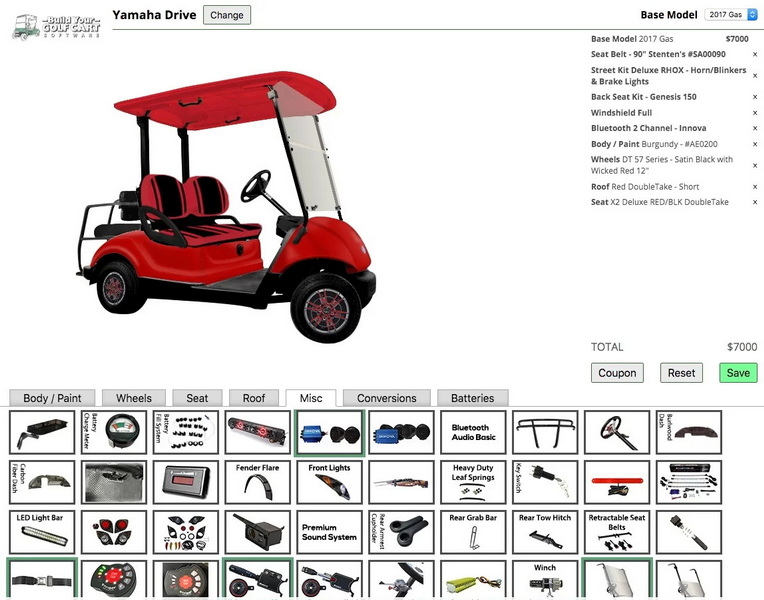Content Menu
● Introduction
● Understanding Electric Golf Carts
● Planning Your Electric Golf Cart Build
>> Determine Your Purpose
>> Set a Budget
>> Gather Materials and Tools
>> Design Your Cart
● Building Your Electric Golf Cart
>> Step 1: Construct the Chassis
>> Step 2: Install the Electric Motor
>> Step 3: Set Up the Battery System
>> Step 4: Connect the Controller
>> Step 5: Install the Wheels and Tires
>> Step 6: Add the Body and Seating
>> Step 7: Wire the Electrical System
>> Step 8: Install Accessories
>> Step 9: Test and Adjust
● Customization Ideas
● Maintenance Tips
● Safety Considerations
● Video Tutorial
● Conclusion
● Frequently Asked Questions
>> 1. What type of batteries should I use for my electric golf cart?
>> 2. How fast can an electric golf cart go?
>> 3. Can I use my electric golf cart on public roads?
>> 4. How long does it take to build an electric golf cart?
>> 5. What maintenance does an electric golf cart require?
Introduction
Building your own electric golf cart can be an exciting and rewarding project for DIY enthusiasts and golf lovers alike. This comprehensive guide will walk you through the essential steps, materials, and considerations needed to create your custom electric golf cart. Whether you're looking to convert an existing gas-powered cart or build one from scratch, this article will provide you with the knowledge and inspiration to get started on your electric golf cart journey.

Understanding Electric Golf Carts
Before diving into the building process, it's essential to understand the components that make up an electric golf cart:
1. Chassis: The frame of the cart, which supports all other components.
2. Electric Motor: The heart of the cart, responsible for propulsion.
3. Batteries: Provide the necessary power to the motor.
4. Controller: Regulates the power from the batteries to the motor.
5. Wheels and Tires: Essential for mobility and stability.
6. Body: The outer shell that provides aesthetics and protection.
7. Seating: Comfortable seating for passengers.
8. Accessories: Additional features like lights, storage compartments, and sound systems.
Planning Your Electric Golf Cart Build
Determine Your Purpose
Consider how you intend to use the golf cart. Will it be for personal use on the golf course, or do you plan to use it for other purposes, such as neighborhood transportation or yard work? This will influence your design choices.
Set a Budget
Establish a budget for your project. Costs can vary significantly based on the components you choose, so it's essential to have a clear financial plan. Consider the costs of materials, tools, and any additional features you may want to include.
Gather Materials and Tools
Make a list of all the materials and tools you will need. Common materials include:
- Chassis (can be purchased or built)
- Electric motor
- Batteries
- Controller
- Wiring and connectors
- Wheels and tires
- Body panels
- Seats
Tools you'll need may include:
- Screwdrivers
- Wrenches
- Pliers
- Wire cutters
- Multimeter
- Soldering iron
Design Your Cart
Sketch out your design. Consider the size, shape, and features you want. You can find inspiration from existing electric golf carts or customize your design to reflect your style. Think about the layout of the seating, storage options, and any additional features you want to include.

Building Your Electric Golf Cart
Step 1: Construct the Chassis
If you're building your chassis, use sturdy materials like steel or aluminum. Ensure that it is strong enough to support the weight of the cart and its passengers. If you prefer, you can purchase a pre-made chassis to save time.
When constructing the chassis, consider the dimensions carefully to ensure it fits your design and intended use.
Step 2: Install the Electric Motor
Mount the electric motor onto the chassis. Ensure it is securely fastened and aligned with the drive system. Depending on your design, you may need to connect the motor to the rear axle or use a belt drive system.
Make sure to choose a motor that provides adequate power for your intended use, whether it's for leisurely drives or more demanding terrains.
Step 3: Set Up the Battery System
Choose the type of batteries you want to use. Lead-acid batteries are more affordable but heavier, while lithium-ion batteries are lighter and have a longer lifespan.
Install the batteries in a secure compartment on the chassis, ensuring they are easily accessible for maintenance. Consider the placement of the batteries to maintain a balanced weight distribution, which is crucial for stability and handling.
Step 4: Connect the Controller
The controller is a critical component that regulates the power from the batteries to the motor. Follow the manufacturer's instructions to connect the controller to the motor and batteries. Ensure all connections are secure and insulated to prevent short circuits.
A well-installed controller will enhance the performance and efficiency of your golf cart.
Step 5: Install the Wheels and Tires
Attach the wheels and tires to the chassis. Ensure they are properly aligned and secured. Choose tires that are suitable for the terrain you plan to drive on, whether it's grass, pavement, or rough terrain. The right tires can significantly affect the cart's performance and comfort.
Step 6: Add the Body and Seating
Install the body panels to give your golf cart its shape and protect the internal components. Add comfortable seating for the driver and passengers. Consider using weather-resistant materials for both the body and seating to ensure durability.
Step 7: Wire the Electrical System
Carefully wire all electrical components, ensuring that connections are secure and insulated. This includes connecting the motor, controller, batteries, lights, and any other electrical accessories you've added to your cart.
Step 8: Install Accessories
Add any additional features you want, such as:
- LED lights for better visibility
- Horn for safety
- Storage compartments
- Cup holders
- USB charging ports
- Sound system
Step 9: Test and Adjust
Once everything is connected, conduct a thorough test of the cart. Check the motor, brakes, and steering to ensure everything functions correctly. Take a few trial runs in a safe environment to gauge the speed and handling of your converted cart.
Make any necessary adjustments to the motor, controller settings, or wheel alignment to optimize performance and comfort.

Customization Ideas
To make your electric golf cart truly unique, consider these customization ideas:
1. Custom paint job or vinyl wrap
2. Upgraded suspension for a smoother ride
3. Solar panels for auxiliary power
4. Bluetooth connectivity for your devices
5. All-terrain tires for off-road adventures
6. Windshield and roof for weather protection
Maintenance Tips
To keep your electric golf cart in top condition, follow these maintenance tips:
- Regularly check and tighten all connections
- Keep the batteries charged and clean
- Inspect tires for wear and maintain proper inflation
- Lubricate moving parts as needed
- Clean the cart regularly to prevent dirt buildup
- Store the cart in a dry, covered area when not in use
Safety Considerations
When building and using your electric golf cart, keep these safety considerations in mind:
- Always wear a seatbelt if installed
- Observe speed limits and traffic rules
- Be aware of your surroundings, especially on shared paths
- Ensure all lights and signals are working properly
- Never overload the cart beyond its weight capacity
- Keep the cart properly maintained to prevent accidents
Video Tutorial
For a visual guide on building an electric golf cart, check out this helpful video:
Conclusion
Building your own electric golf cart is a challenging but rewarding project that allows you to create a custom vehicle tailored to your needs and preferences. By following this comprehensive guide, you can transform a standard golf cart or build one from scratch, resulting in an eco-friendly and personalized mode of transportation for the golf course or your local community.
Remember to prioritize safety throughout the building process and during use. Regular maintenance will ensure your electric golf cart provides years of reliable service. Whether you're a DIY enthusiast or a golf lover looking for a unique project, building your own electric golf cart is an exciting venture that combines creativity, technical skills, and the joy of customization.

Frequently Asked Questions
1. What type of batteries should I use for my electric golf cart?
The two main types of batteries used in electric golf carts are lead-acid and lithium-ion. Lead-acid batteries are more affordable but heavier and have a shorter lifespan. Lithium-ion batteries are lighter, have a longer lifespan, and provide better performance, but they are more expensive. Choose based on your budget and performance needs.
2. How fast can an electric golf cart go?
The speed of an electric golf cart depends on its motor and controller settings. Most standard electric golf carts have a top speed of 12-14 mph (19-22 km/h). However, with modifications and more powerful motors, some custom-built carts can reach speeds of up to 25 mph (40 km/h) or more.
3. Can I use my electric golf cart on public roads?
The legality of using electric golf carts on public roads varies by location. Many communities allow golf carts on certain roads with speed limits under 35 mph (56 km/h). However, you may need to add safety features like headlights, taillights, turn signals, and seat belts to make your cart street-legal. Always check local laws and regulations before using your cart on public roads.
4. How long does it take to build an electric golf cart?
The time it takes to build an electric golf cart can vary greatly depending on your experience, the complexity of your design, and the availability of parts. For a basic conversion of an existing cart, it might take a weekend to a week. Building a cart from scratch or doing a more complex customization could take several weeks to a few months of dedicated work.
5. What maintenance does an electric golf cart require?
Regular maintenance for an electric golf cart includes:
- Checking and charging the batteries
- Inspecting and cleaning electrical connections
- Checking tire pressure and condition
- Lubricating moving parts
- Inspecting brakes and adjusting as needed
- Cleaning the cart body and undercarriage
- Checking and tightening any loose bolts or fasteners
Performing these maintenance tasks regularly will help ensure your electric golf cart remains in good condition and operates safely.











































